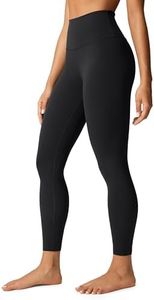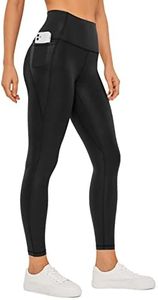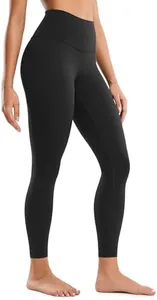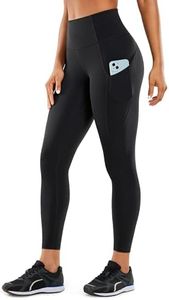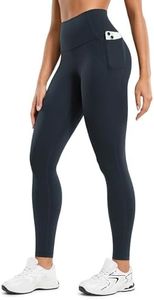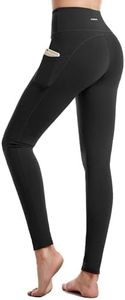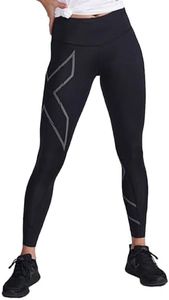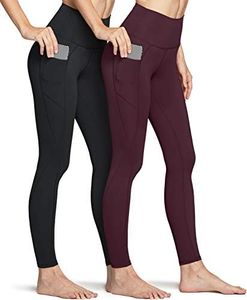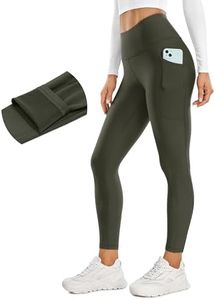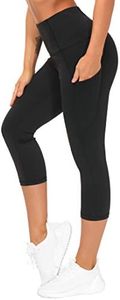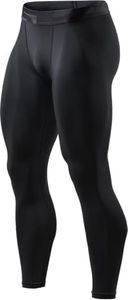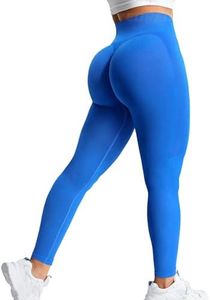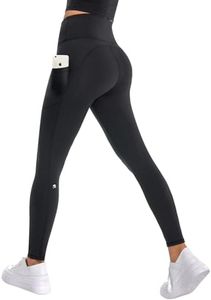We Use CookiesWe use cookies to enhance the security, performance,
functionality and for analytical and promotional activities. By continuing to browse this site you
are agreeing to our privacy policy
10 Best Running Leggings
From leading brands and best sellers available on the web.Buying Guide for the Best Running Leggings
Choosing the best running leggings is all about finding the right blend of comfort, performance, and practicality for your needs. Since running leggings come in many different styles, fabrics, and fits, it's important to focus on the specs that will impact how you feel during your runs. Consider where and when you’ll be running, how you like your leggings to fit, and what features will keep you comfortable and focused.MaterialThe material of running leggings refers to the fabric blend used to make them, often a mix of synthetics like polyester, nylon, and spandex. This is important because it affects breathability, moisture-wicking ability, and flexibility. Lightweight blends with a higher percentage of spandex tend to be stretchier, while thicker blends may feel warmer and more supportive. For hot weather, choose lighter, more breathable fabrics, whereas in cooler weather, thicker, thermal materials work best. Consider your local climate and preferred running seasons to guide your material choice.
Fit and CompressionFit describes how closely the leggings hug your legs, ranging from relaxed to very snug 'compression' fit. Compression leggings provide muscle support and may reduce fatigue, while a looser fit might be more comfortable for casual running. For everyday runners or long distances, moderate compression can be supportive without feeling restrictive. If you prefer freedom over support, a regular athletic fit is a safe bet. Match the fit to your comfort preferences and intensity of running.
LengthLength refers to how far the leggings extend down your leg—either full-length, 7/8-length, or capri. Full-length offers the most coverage, helpful in cold weather, while shorter styles like 7/8 and capri are cooler and suited for warmer weather. If you frequently run in varying temperatures, consider owning more than one length, but for most, match the length to your climate and personal temperature preference.
Waistband TypeThe waistband can range from low-rise to high-rise and may include features like drawstrings or elastic. A higher-rise waistband often provides more support and helps the leggings stay put during vigorous activity, especially useful for longer runs or interval training. Drawstrings deliver extra security but can sometimes cause discomfort if not adjusted properly. If you’re concerned about leggings slipping down, opt for high-rise or those with a secure waistband.
PocketsPockets are storage spaces built into the leggings, usually at the waistband or along the leg. This is important if you like to carry a phone, keys, or snacks when running. Some leggings have deep, zippered, or hidden pockets for security, while others have simple side pockets for quick access. Evaluate what you typically bring with you and pick leggings with sufficient and appropriately sized pockets for your things.
Moisture-Wicking and BreathabilityMoisture-wicking and breathability are qualities relating to how well the leggings handle sweat and allow air flow. Good moisture-wicking draws sweat away from your skin to keep you dry, while breathable fabrics prevent overheating. These specs are especially important for hot or intense runs. If you tend to sweat a lot or run in warm conditions, prioritize leggings that highlight these properties.
Seam ConstructionSeam construction refers to how and where the pieces of fabric are stitched together. Flatlock seams are designed to reduce chafing during movement, while traditional raised seams can sometimes cause irritation. If you plan on running longer distances or are prone to skin sensitivity, seek out leggings with flatlock or minimal seams for added comfort.
ReflectivityReflectivity is the presence of reflective elements on the leggings that enhance visibility in low light, such as when running at dawn, dusk, or night. If you frequently run when it’s dark outside, reflectivity can be a key safety feature. Choose leggings with reflective details if you regularly run in such conditions, otherwise this may be less critical.
